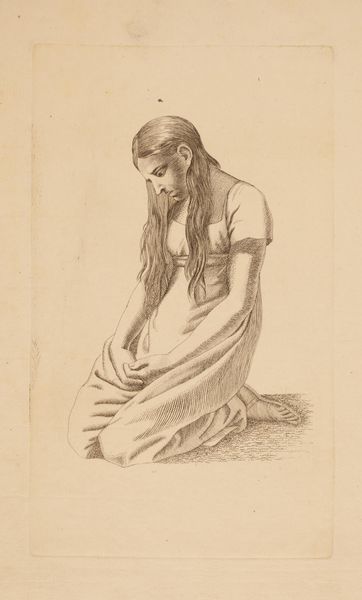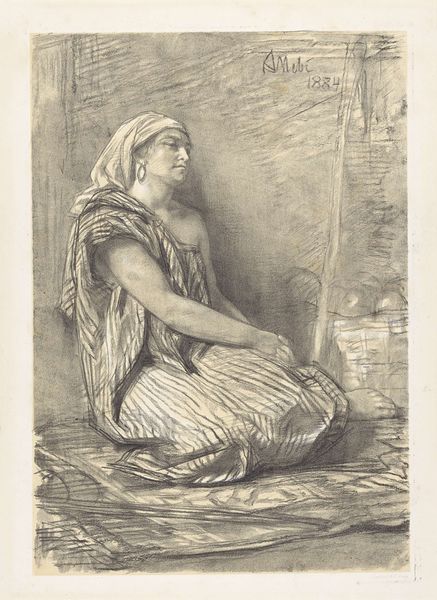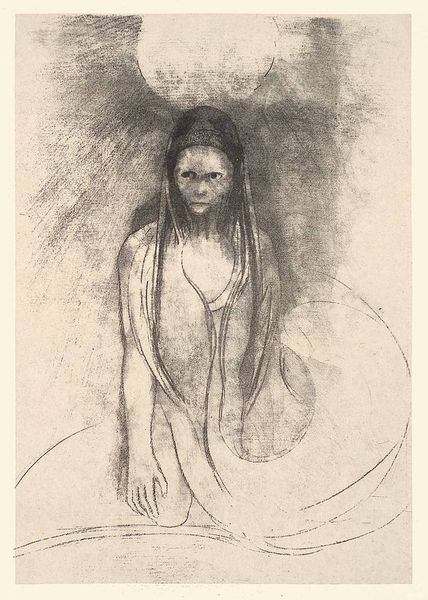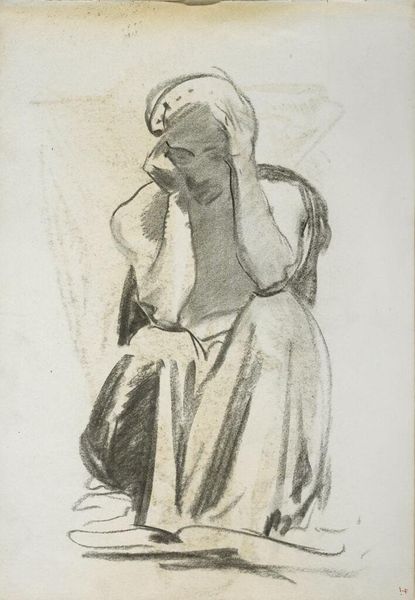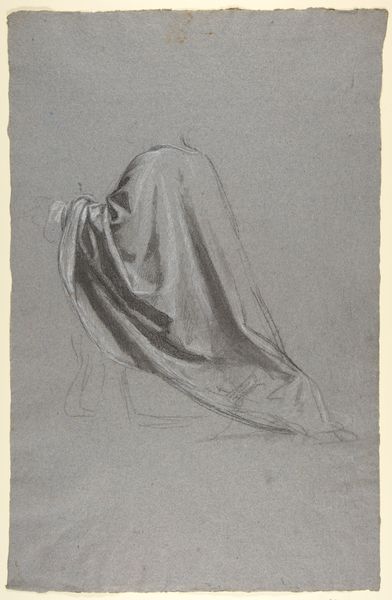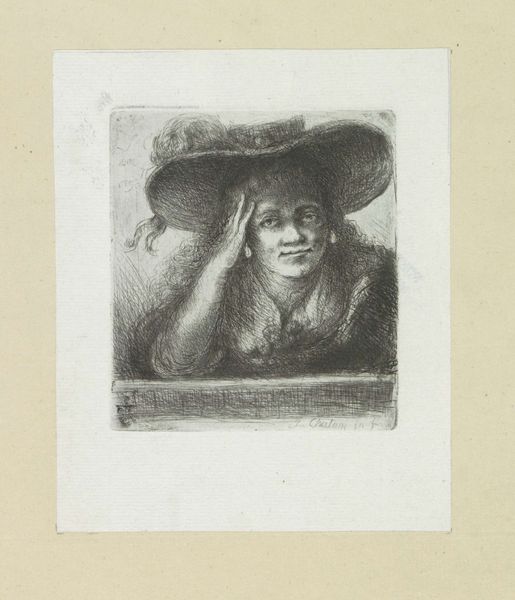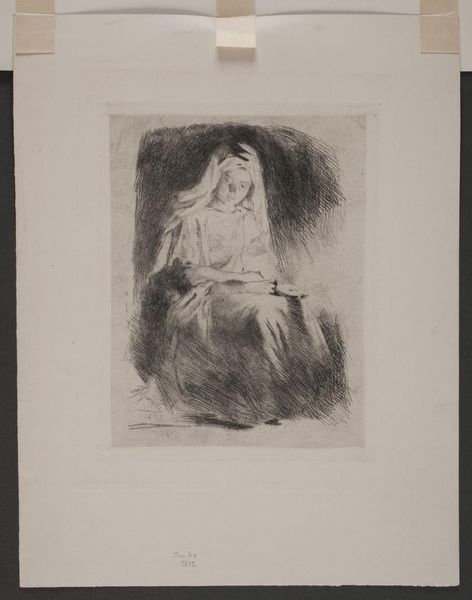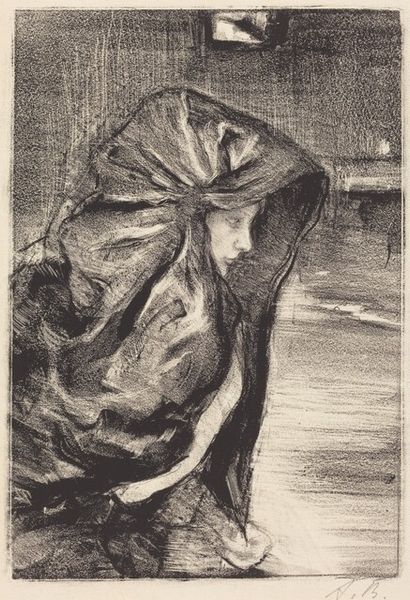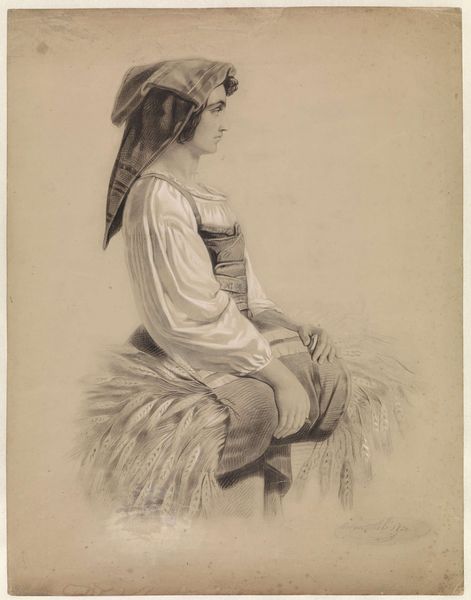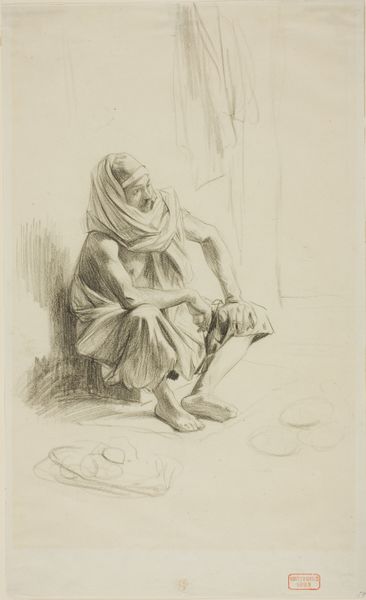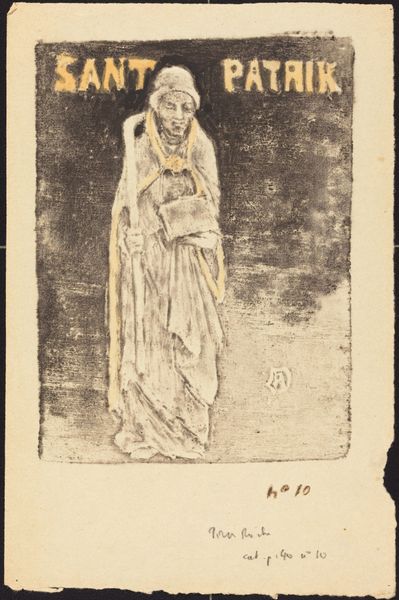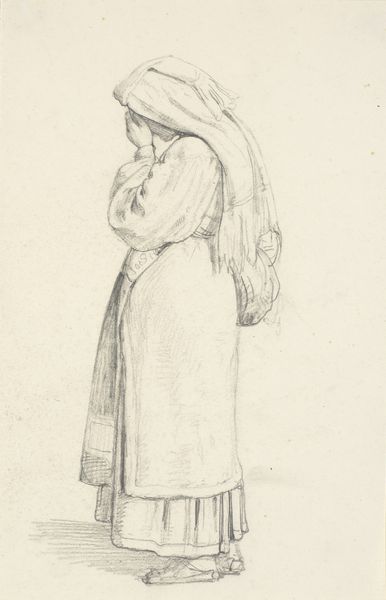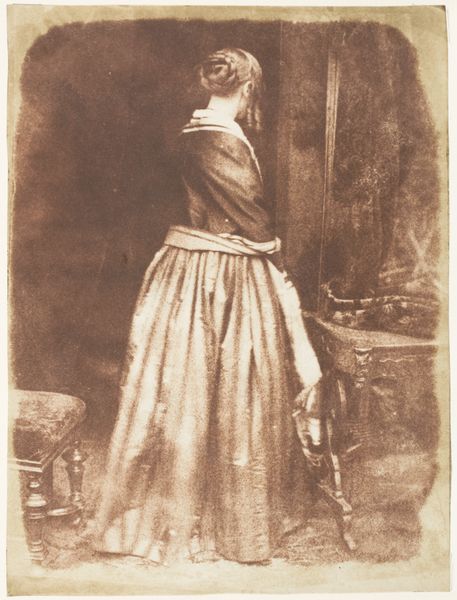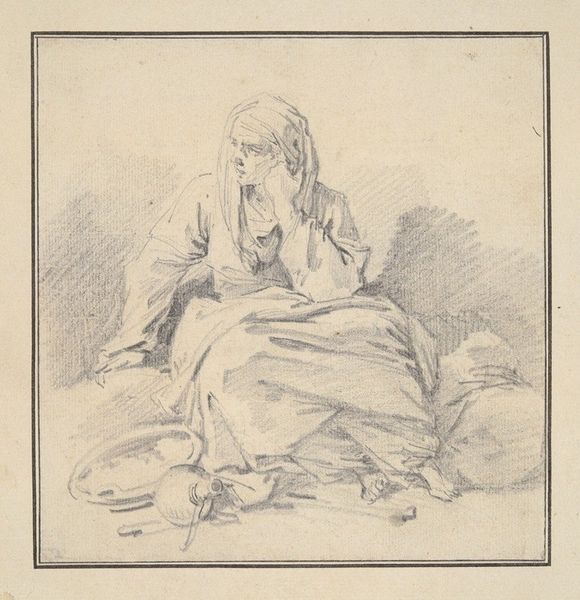
print, etching
#
portrait
#
medieval
# print
#
etching
#
portrait drawing
#
realism
Dimensions: 201 mm (height) x 117 mm (width) (plademaal)
Editor: This is "Kneeling Young Girl" by Erling Eckersberg, created sometime between 1808 and 1889. It's an etching, so a print. I’m immediately drawn to the cross-hatching on her dress – it gives it such a tangible weight and texture. What do you make of this work? Curator: I see a powerful statement about the artist's process. Eckersberg, through the etching technique, directly engages with the materiality of artmaking. The lines aren't just descriptive; they're evidence of labor. Think about the copper plate, the acid, the careful, repetitive motions needed to create those marks. This isn't just an image of a kneeling girl, but an index of the artist's hand and his time. Editor: So, the medium itself is the message, in a way? The process of creating the print becomes part of its meaning? Curator: Precisely. Etchings were relatively reproducible, making art more accessible, though not completely democratized. Consider how the act of kneeling might connect to ideas of piety, labor, or even subservience. The texture of the dress, the lines that form it, further embed this figure in a specific socioeconomic context. Editor: That makes me think about the accessibility of art and the economics of printmaking in that era. Was Eckersberg making a social comment? Curator: The etching’s style, emphasizing realist depictions and human form, would attract interest to different art patrons from varied backgrounds, raising interest around accessibility to the artwork to be able to communicate the ideas contained. The contrast with smoother areas draws our attention back to that material execution, preventing us from easily consuming her image and demanding that we consider the labor that created it. Editor: That’s fascinating. I hadn't considered how the medium and style choices are themselves political statements, revealing something about the social context in which this print was made. Thank you. Curator: Absolutely. Always consider what an artist *does* with materials as much as *what* they depict, that helps in forming a different understanding.
Comments
No comments
Be the first to comment and join the conversation on the ultimate creative platform.
